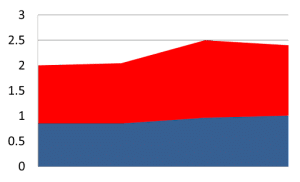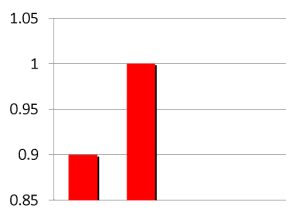PPM’s Commitment to Health & Safety
Maintaining the health and safety of our employees is of primary importance to PPM, and our track record proves it. Key elements of PPM’s health, safety, security and environmental (HSSE) program are provided below.
PPM is committed to promoting health, safety, security and environment (HSSE) measures in all of our business practices. This commitment is expressed by the top levels of firm leadership who lead by example. With a committed corporate Health and Safety Officer, HSSE coordinators in each office, safety supervisors on every project, advanced training, and regular toolbox meetings, safety and security permeate the firm culture. Additionally, PPM seeks to restore and improve the natural environment by exercising environmental stewardship in all of our business practices.
Our program conforms to the requirements of OSHA 29 CFR 1910 (General Industry) and 1926 (Construction) standards, which are uniformly implemented and enforced by designated safety representatives under the direction of the Health and Safety Director. PPM currently has 45+ written regulatory and best-practice programs in place.
PPM is a zero-tolerance drug and alcohol firm. Medical monitoring is provided by practicing Occupational Medicine physicians or licensed health care professionals (PLHCP) to employees with existing or potential exposures to hazardous substances as part of their business practice(s). Testing and examinations are provided accordingly:
Employee expectations are communicated through instructional training events, safety meetings, and/or tailgate meetings. Employee competency is established through formal education, certification, work history, testing and evaluation and/or observation. Frequency of training occurs at intervals established for regulatory compliance, or in the absence of such criteria, based upon best practices to retain skills and information previously presented. Third-party training providers such as the Alliance Safety Council, Tennessee Valley Training Center (TVTC), American Red Cross (ARC), American Heart Association (AHA), National Environmental Trainers (NET) and other similar providers are used for site access and more specialized training including, but not limited to, the following:
Health and safety plans (HASPs) are generated for all site projects where chemical, physical, and/or biological hazards are known or anticipated to be present. These plans are tailored to each jobsite and address the hazards, prevention and emergency response measures to be implemented to ensure a safe working environment is sustained throughout the course of the project.
Routine random inspections are conducted by designated safety representatives to ensure workers are following safety procedures to maintain safe working conditions. All employees, regardless of position, have the full authority of PPM to stop work immediately when conditions and/or behaviors arise that are deemed unsafe.
In an effort to prevent worker injury or property damage, near-misses are reported to the safety department for events as they occur. Each near-miss is reviewed and action(s) taken to address existing hazards to prevent possible escalation into injury or damage. Incidents are also reported as they occur and are further investigated to determine the root cause of the event and implement corrective measures to prevent future occurrences.
All medical, training, exposure assessment, injury/illness logs, and other relevant documents generated for the purpose of employee health and safety are retained in accordance with regulatory requirements for record retention. Employees, or their designated representative(s), are granted access to any materials deemed appropriate for release by OSHA.
Third-party contractor verification systems are used for health and safety compliance. PPM currently subscribes to ISNetworld, Avetta and DISA, but has also formerly used the services of NCMS, BROWZ and Veriforce. PPM successfully completed a rigorous RAVS Plus safety audit through ISNetworld in 2020 and is considered a RAVS Plus-certified employer.
An incentive program is used to reward workers for their efforts to improve the health and safety program. Recognition is granted to employees who actively participate by leading a safety toolbox, reporting a hazard or near-miss, recommending improvements to the existing program, etc. Workers who negligently or willfully violate PPM’s safety policies and procedures will be subject to disciplinary actions including verbal and written warnings, suspension and/or termination of employment.



